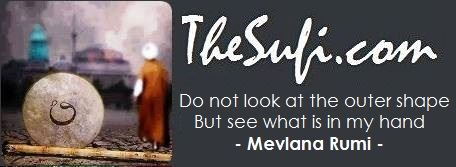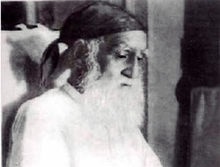The Genius of Ustad Nusrat Fateh Ali Khan: Letter by Wazir Dayers
Dear Brother W
At the beginning of the holy month of Ramadan I wrote you that I would send you some more music after Eid-ul-Fitr. And here it is: I’m sending you some more qawwalis by Ustad Nusrat Fateh Ali Khan Sahib.
In the late 1980s and early 1990s I had the good fortune to see and hear Ustad Nusrat Fateh Ali Khan Sahib a number of times. The first time was in Brussels, in March 1988. It was the very first concert Ustad Nusrat Fateh Ali Khan Sahib gave in Belgium, and at the time, he wasn’t as well-known or famous in the West as he would later become. You won’t be surprised if I tell you that this concert was a life-changing experience. For more than three hours Ustad Nusrat Ji and his Party sang, one wondrous qawwali after the other. I was completely overwhelmed by the intensity of the performance. Words can never express what this concert did to me. One thing’s for sure: it got me hooked on Nusrat Ji for the rest of my life!
That year I saw and heard Nusrat Ji perform a second time, at the end of July. He was one of the acts on the bill of the “Sfinks Festival”, an annual festival near Antwerp, where people can get to know singers and musicians from all around the world. To my regret, Nusrat Ji only had about one hour to sing. Nonetheless I felt blessed that I was there and that once again I had been touched by the magic of this extraordinary singer. Not just I, but the entire audience was left spellbound and filled with awe by this giant of qawwali.
After his performance, I saw a stall with a stack of Pakistani audio tapes with music by Ustad Nusrat Fateh Ali Khan. I was still fairly new to his music and didn’t know what to choose. I therefore decided to choose randomly.
The title of the first song, “Agar Furqat Ke Sadme” ”, was also misspelt as “Agar Fursat Ke Sadme”. But who cares about such small errors: this tape contained four marvellous Urdu qawwalis, all sung in traditional style. I’m sending you digitalised versions of these superb songs.
In addition to the harmoniums and the tabla, you can hear other instruments: the dilruba, the santoorand the clarinet. Later I learned that in the late 1970s and early 1980s, many Punjabi qawwals enhanced their music with these instruments. In addition to the dilruba, the santoor and the clarinet, they also often used the mandolin and the acoustic guitar.
I believe that music I bought dates from this era (there’s no year mentioned on the tape itself). The picture of Ustad Nusrat Fateh Ali Khan on the front suggests the same: he looks quite young and the style of his shirt collar is typical of this period.
It also explains why the tape is entitled “Nusrat Fateh Ali Khan & Mujahid Mubarak Ali Khan Qawwal”. As you know, most qawwals sang (and still sing) in pairs, and in those days Ustad Nusrat Fateh Ali Khan and Ustad Mujahid Mubarak Khan were still considered a pair, although it was very clear that Ustad Nusrat Ji was the leading singer and the one with the greatest potential, in every respect. As qawwals, they were no equals, and never could be. Ustad Mujahid Mubarak Ali Khan could only complement, support and serve Ustad Nusrat Fateh Ali Khan Sahib. And that’s exactly what Ustad Mujahid Ji did for several decades, with great fervour and with all his might, and as long as his health permitted. Ustad Mujahid Muabarak Ali Khan was a humble and unassuming man, and I will always think of him and remember him with fondness.
Ustad Mujahid Mubarak Ali Khan, who passed away in 1996, was Nusrat’s older cousin. He was the son of Ustad Mubarak Ali Khan (who passed away in 1971) and the father of Rizwan Ali Khan & Muazzam Ali Khan, who were taught the art of qawwali by their father and by Ustad Nusrat Fateh Ali Khan Sahib himself.
A voice you often hear on this tape is that of the awazia (vocalist) Ustad Maqsood Hussain. Maybe his raucous voice sounds unpleasant to many Western ears, but he was a great and highly skilled singer. He was a member of Ustad Nusrat Fateh Ali Khan’s ensemble for many years. I haven’t been able to find when Ustad Maqsood Hussain died, but it’s highly unlikely that he’s still alive – he was already in his fifties or sixties in the early 1980s. In the mid-1980s, little Rahat Fateh Ali Khan took his place. In the late 1980s a young singer called Kaukab Ali (I have no further information about him) replaced Rahat, but I’ve never seen or heard him after 1988.
The tape I bought in July 1988 completely “coloured” the months of August and September that year for me. I just couldn’t get enough of it. I didn’t understand a blind word of Urdu, but every day and night I listened to these qawwalis over and over again, usually in tears. It would have been nice if I had been able to understand the lyrics, but Nusrat Ji’s incomparable singing touched me more and deeper than I can say, transcending the barrier of language – qawwali has that power. In the qawwalis on the tape he frequently sings sargam; these passages, which have no linguistic meaning, are abstract, also had a profound impact on me as I listened to the tape. I often got entirely intoxicated by listening to it.
Now I’d like to share these qawwalis with you and – God willing – with the many people who visit TheSufi.com. May you and they also become intoxicated by this wondrous music!
These are the titles of the qawwalis on the tape:
- Agar Furqat Ke Sadme Kam Na Honge – Lyrics: Hazrat Pir Naseer-ud-Din Naseer Shah Gilani of Golra Sharif (1949-2009) – R.A. This Sufi mystic was the great-grandson of the Sufi Saint Hazrat Pir Mehr Ali Shah (1859-1937) and custodian of the latter’s shrine in Golra Sharif, Pakistan. Hazrat Pir Mehr Ali Shah (R.A.) belonged to the Nizami branch of the Chishti Sufi Order.
- Woh Dil Hai Jo Kisi Ke Husn Ka Kashana Ho Jaye – Lyrics: Hazrat Bedam Shah Warsi (R.A.), a Saint of the Warsi Sufi Order, who lived from 1876 to 1936 (some sources give other years – let’s just say that he lived in the late 19th and early 20th century).
- Koi Mushkil Tha Mehshar Mein Tumhe Qatil Bana Dena – Lyrics: Ustad Qamar Jalalvi (a famous Pakistani poet, born in 1887 in the town of Jalali, near Aligarh, India. He died in Karachi, Pakistan, in 1968).
- Na Duniya Na Mansab Na Zar Ke Liye – Lyrics: Hazrat Pir Naseer-ud-Din Naseer Shah Gilani of Golra Sharif (1949-2009) – R.A.
I attach a number of pictures to this email that may be useful to people who want to learn more about the qawwali history of Ustad Nusrat Fateh Ali Khan’s family and the authors of the poems on the tape. One of the pictures shows Nusrat Ji’s father and uncle: Ustad Fateh Ali Khan & Ustad Mubarak Ali Khan Qawwal. The quality of the picture is rather poor, but it’s the best I have. Ustad Fateh Ali Khan (1901-1964) is the one holding the surmandal (or swaramandala) and Ustad Mubarak Ali Khan is the man with the white beard sitting in the middle.
Ustad Fateh Ali Khan Qawwal must have been an extraordinary man and musician. He was both a highly accomplished classical singer and a deeply devoted and very able qawwal. He and his brother were close friends of the brothers Ustad Salamat Ali Khan (1934-2004) and his brother Ustad Nazakat Ali Khan (1928-1983). Ustad Salamat and Ustad Nazakat Ali Khan are considered the greatest classical singers of the Indian subcontinent of the second part of the 20th century (and rightly so, in my opinion). Especially Ustad Salamat Ali Khan stands out as the most brilliant classical singer of the second half of the 20th century and as a musical genius. And he was. And yet, for a while, he was taught by Ustad Fateh Ali Khan Sahib.
In an interview, I once heard Nusrat Ji say about himself: “Compared to my father, I am but an ordinary musician.” Quite a statement coming from one as great as Ustad Nusrat Fateh Ali Khan! Nusrat Ji went on to say that when his father performed in a ritual context, he often became so engrossed in the mystical depths of the qawwali music that after his performance he went into seclusion, sometimes for more than a week, and was unable to speak – he could only weep. He must have been a most remarkable man indeed.
Well, Dear Brother, that’s all I have to write this time. I hope you’ll enjoy the qawwalis and hope to send you some more in the future.
Yours affectionately,
Wazir
A few words for those who are unfamiliar with the oriental instruments I mentioned:
The dilruba is a Hindustani bowed instrument. Its name is Persian and literally means “heart-thief”. It was named so because of its sweet and alluring sound.
The santoor is a dulcimer, played with a pair of wooden sticks with curved ends. The dulcimer is found in many parts of the world, from China to Central Europe. In Kashmir it is used in Sufi music. In the second half of the 20th century, the Kashmiri santoor has been transformed to make it suitable for the classical music of India and Pakistan. The santoor has been present in India for at least two thousands years; its original name in Sanskrit was “shata tantri veena” (“veena [= “stringed instrument”] with a hundred strings”].
The surmandal is the simplified form of “swaramandala”. “Swara” means “note” and “mandala” literally means “circle”. However, with regard to this instrument, “mandala” means “group”. “Swaramandala” therefore means “group of notes”. It is a trapezoid-shaped psaltery or zither; it is often used as an accompanying instrument by Hindustani classical singers.
Perhaps it’s also useful to explain what sargam is: improvising while singing the names of the notes of Hindustani classical music: Sa, Re, Ga, Ma, Pa, Dha and Ni. It is widely practised by Hindustani classical vocalists. Ustad Nusrat Fateh Ali Khan excelled in sargam improvisation.
If you wonder why I write “Hindustani” and not “North Indian”, then this is why: the classical music of North India is also found in Pakistan, Nepal, Bangladesh and even in Afghanistan, where it was introduced at the royal court of Kabul in the 1860s.



